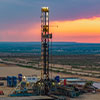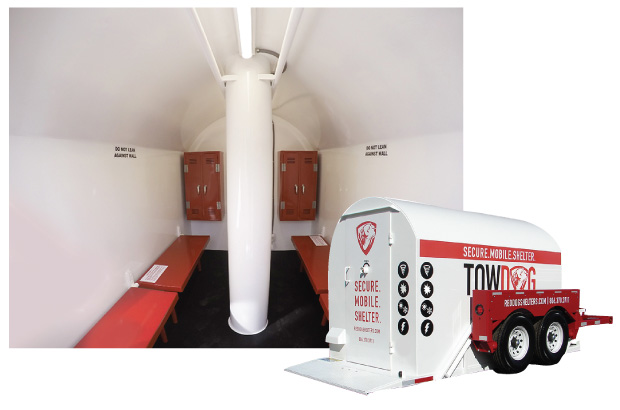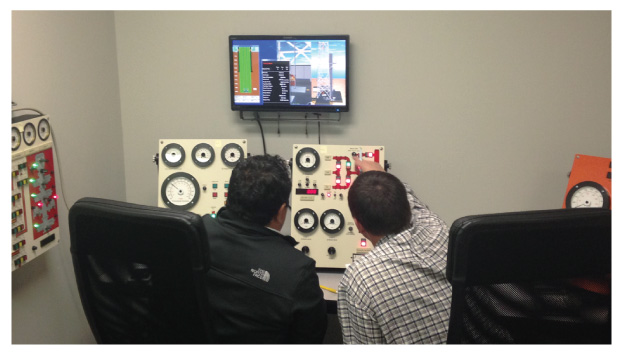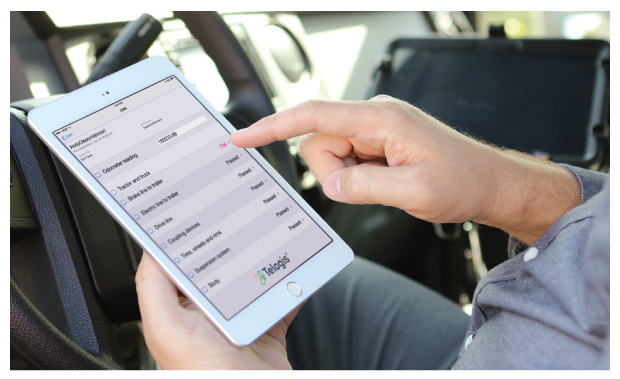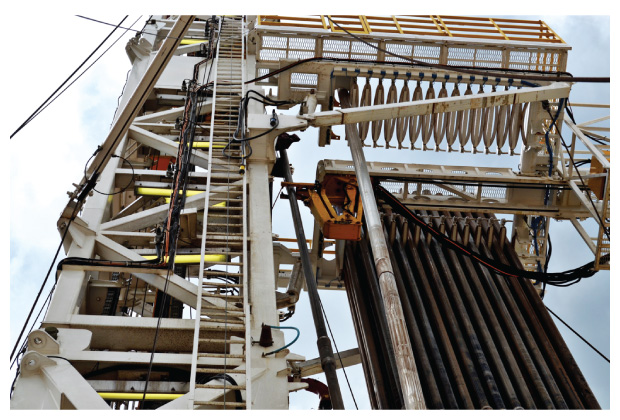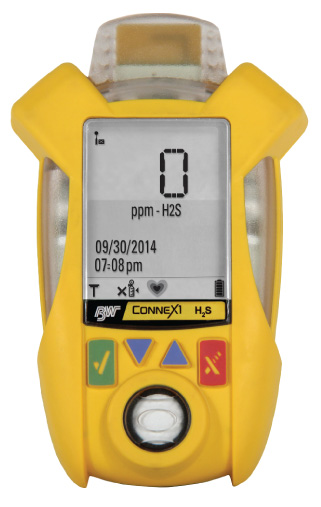
Life-Saving Technology
HS&E Advancements Enhance Safety
By Danny Boyd, Special Correspondent
Innovations in equipment, systems, worker care and training are enabling operators and service companies to enhance health, safety and environmental programs while holding the line on costs. The overarching objective for providers of HS&E-related solutions is to make the exploration, drilling, completion and production world a safer place by mitigating work site operational risks to protect employees and the environment, all while keeping projects on schedule and on budget.
The latest advancements include portable shelters for well site personnel, improved lighting systems for hazardous locations, “fit-for-duty” procedures to identify potential worker health issues so conditions can be addressed with medical treatment before an emergency arises on the job site, new safety and well control training processes, cloud-based solutions to remotely monitor the locations of employees and vehicles, next-generation automated drill pipe handling technology, and wireless gas detection and monitoring capabilities.
Mother Nature is always a wild card in oil and gas operations. Weather can pose serious risks to workers located far from a permanent structure and exposed to the elements–especially during the spring and summer severe weather season.
Like the larger Big Dog™ shelter that accommodates 32 crew members, the new Tow Dog™ from Red Dog Shelters can withstand the destructive force of an EF5 tornado while keeping workers safe from explosions, extreme temperatures, hail and lightening. Featuring an aerodynamic anchoring design that uses the force of the wind to secure the shelter to the ground, the trailer-mounted unit accommodates up to 12 and can be pulled to a worksite by a ¾-ton truck.
To address this serious safety issue, Red Dog Shelters has developed a rapid-deployment, mobile storm and blast-resistant tornado shelter for application in remote workplaces. “Red Dog shelters are unique in that they are mobile tornado shelters, and they use the force of the wind as their primary anchoring factor,” says Vice President Marc Gilmour. “Using the wind to anchor a storm shelter is much more reliable than using earth anchors to hold it in place. You never have to anchor Red Dog shelters, which means they are portable and reliable.”
The newest addition to the Red Dog Shelter product line is the trailer-mounted Tow Dog™. Able to accommodate up to 12 workers, Gilmour says the Tow Dog is truly mobile and can be pulled to location easily by a three-quarter ton truck. With the use of hydraulics, the shelter can be fully operational within a matter of seconds, and is just as easily decommissioned and relocated as needed.
The larger Big Dog™ can accommodate 32 crew members and is similarly anchored aerodynamically. “Our design turns the destructive force of the wind into a benefit,” Gilmour explains. “The harder the wind blows, the more securely the shelter is fixed to the ground.”
The patented design causes air to flow over the curved roof of the unit, concentrating an area of low pressure along the peak. Red Dog shelters are anchored to the ground in the same way a suction cup sticks to a window, but with considerably more force.
Both shelter models include air conditioners and heaters, rapid cool-down stations, and proprietary Crew-Alert™ tornado and lightning warning systems. Retractable desks and benches allow the units to be used as remote office space.
“Our units meet or beat our expectations when tested under extreme conditions. Blast tested by the Southwest Research Institute in San Antonio, the Big Dog will withstand a 1 million-pound dead load without failure, making it the strongest mobile, blast-resistant module available. The units were awarded an EF5 tornado rating from the Federal Emergency Management Agency,” Gilmour relates.
According to FEMA guidelines, EF5 is the most severe tornado classification level with wind speeds in excess of 200 miles an hour and enough force to damage even reinforced concrete structures.
Red Dog shelters can be leased or purchased, and are moved easily from location to location as needed, Gilmour adds. “Keeping workers safe is our main goal. The time to think about weather and blast safety is before you have a problem. Red Dog shelters on the job site give you and your workers peace of mind,” he says. “Red Dog shelters will save lives.”
LED Lighting
Larson Electronics continues to advance its line of explosion proof LED lights and fixtures with an eye to providing increasingly improved lighting for hazardous location protection for the offshore industry and protecting rig workers from the intense heat emitted by traditional lighting, says Brandon Lesley, creative director.
Larson Electronics’ product line includes explosion-proof blasting lights, hazardous location lights, intrinsically safe LED blasting lights, portable work lights, and safe LED trouble lights, he says. “The goal behind the entire product line is to provide explosion-proof lighting and power distribution solutions that are customized, but easily adjustable to fit the needs of various offshore rigs and onshore locations,” offers Lesley.
Advances include permanently mounted explosion-proof light fixtures, as well as the portable EPL-16BS-1X150LED-100 explosion proof LED work light, versatile pedestal and magnetic mount lights, and other Class 1, Division 1 hazardous location lighting solutions, Lesley details.
“The EPL-16BS-1X150LED-100 provides 10,000 square feet of work area coverage with 13,000 lumens of light output,” he states. “The portable LED light is mounted to a four leg aluminum base and has an LED light head measuring 16 inches wide by 14 inches tall.”
Lesley says the LED light head produces a flood pattern of light that is ideal for illuminating enclosed areas and hazardous locations where flammable vapors, gases and dusts may be present. In the past, he notes that industrial lighting had to be monitored continually to ensure that all lights were safe and operating, but the LED lights, including those installed in a lighting system, do not require as much manpower to monitor.
Plus, LED lighting typically is brighter, consumes less power, and emits substantially less heat, according to Lesley.
“LED lights give you a lot more light for a lot fewer watts,” he says. “They usually are more than 50 percent more efficient in a power draw than a traditional light. Also, if workers were to stand next to some light towers with metal fixtures, the heat basically would be the equivalent of standing in a French fry oven. But in front of a fixture with an LED light, you barely can feel any heat at all. That definitely helps workers, especially when they are working in tight spaces and need bright light, but do not need to be subjected to intense heat the entire time.”
Fit-For-Duty Standards
At Wild Well Control, the medical department partners with HS&E solutions to include higher fit-for-duty standards to identify potential health issues that workers may have before they even depart for an international offshore or remote job site, says Dr. Matthew Minson, the company’s medical director.
“In the maritime setting, we have seen–whether talking about the North Sea, Alaskan Shelf or the Gulf of Mexico–that as much as 80-85 percent of medical-related evacuations and disruptions relate not so much to trauma or injury, but to existing medical problems that worsen and lead to the need for acute care,” explains Minson, citing findings from multiple studies.
Now in its fourth year of implementation at Wild Well Control, the more thorough fit-for-duty program includes as a key component a screening physical that differs from an actuarial physical in that it helps identify predictable medical problems that can be treated properly so workers can be safer and more secure in the austere or remote workplace environment, according to Minson.
“We wanted a physical evaluation and exam in which the doctor would be looking specifically at these pathologies or underlying medical concerns and thinking about the job environment,” he says. “For example, if the screening doctor doing the fit-for-duty physical finds that the individual has a blood pressure of 200 over 130, he wants to assure that the blood pressure is adequately controlled medically before deploying to the job, as well as determine whether the person has other medical problems to which hypertension can contribute, such as a cardiac issue.
“The screening physician discusses findings with the medical department and engages the worker’s physician to ensure a proper workup and control is achieved,” Minson says. This additional step results in a safer, healthier workforce, and has major economic benefits for employees and the company, he adds.
In some examples, the cost savings have been as high as a factor of 10 in reducing disruptions of a productive work cycle, Minson says.
“For example, if the company spent $2.5 million a year on medical costs and extractions, it potentially could reduce that to the $200,000 range in one calendar year,” he offers. “We see that reduction across the board.”
Despite some beliefs to the contrary, the new standard does not exclude workers, insists Minson, author of the books Prepare to Defend Yourself: How to Navigate the Healthcare System and Escape with Your Life and Prepare to Defend Yourself: How to Age Gracefully and Escape with Your Dignity, both from Texas A&M University Press.
“The idea with our program is not to say someone with a problem cannot work or to exclude anyone. It is just the opposite and our results show that,” he comments. “If someone has a medical problem, we want to make sure it has been controlled properly and that he is safe,” he says.
“It is one of those great situations where doing the right thing for the employees is also economically beneficial.”
Falck Safety Services has expanded its training courses to include well control training in a “blended” approach in addition to offering core safety and marine-related courses. Through an alliance with Boots & Coots, Falck developed its well control training program to include e-learning, video, 3-D animation and simulation exercises in addition to classroom instruction.
‘Blended’ Training Courses
Falck Safety Services has expanded its safety and marine training courses to include well control training in a “blended” approach in addition to offering core safety- and marine-related courses, says Thomas Boehme, chief operating officer and vice president of sales and marketing.
Falck and Boots & Coots have announced an alliance to offer well control services and training globally, he says. The alliance leverages Boots & Coots’ technical know-how and global recognition of its well control expertise with Falck’s training capabilities.
“This approach to safety training and response equips us to teach the more stringent well control training standards,” Boehme states.
“You could say it is not the time to launch a new product during a downturn, but we have had good success with it,” he assesses. “We have for years had a lot of customers ask why we have not offered this previously because they like our high level of quality.”
The company developed its well control training program to include phone applications that allow workers to sharpen their knowledge between required biennial certification, Boehme says.
“Standards changed around well control,” he says. “It has become a lot harder to pass the class and get certified, so we have done several things to help the employees pass a class by preparing them using e-learning methods before coming to class using our e-learning prep course. We have a lot of tools in the classroom, and they take a computer home at night, and do homework while they are in the class that week.”
With well control, Falck embraced e-learning in areas where it made sense, he says. Students get live teaching in the classroom, and videos and interaction with 3-D animation on personal computers while taking the class. Phone apps help workers stay abreast of well control issues and make renewing certification easier, he adds.
To help operators facing substantially less revenue but fixed costs for safety training, Falck continues offering its line of training courses at most of its 38 sites in 19 countries, Boehme says, although there are restrictions on where, for example, the company can offer fire-related classes.
“Our customers sometimes spend more than half their training dollars on travel and training day per diems, so the closer we can be to the employee’s home, the more money we can save the employer and still keep everybody compliant and keep more people on staff until the industry recovers,” Boehme concludes.
Mobile Enterprise Management
Telogis continues to expand its cloud-based mobile enterprise management (MEM) software platform to help companies connect, optimize and automate vehicles, people and work that is being done outside their four walls, says Geoff Scalf, director of global oil and gas business development.
The Telogis MEM platform includes a comprehensive compliance and safety view that monitors driver behavior and location, alerts companies when employees enter hazardous areas, monitors driving hours, and informs companies about vehicle maintenance needs, he says, adding that the platform also offers the capacity to produce load tickets, and monitor and record a driver’s vehicle inspections.
The Telogis cloud-based mobile enterprise management platform reduces costs while improving driver performance and enhancing safety and compliance. Its capabilities include monitoring driver behavior, vehicle location, driving hours, idle time, vehicle inspections and maintenance needs, and alerting companies when vehicles enter hazardous areas.
“In today’s world, if you are using a platform only to monitor vehicle location and speed, you are missing out on a tremendous amount of efficiencies and shortchanging your overall safety program,” he insists. “The thing most of our customers like best about the platform is that it is a solution they grow into and not out of.”
The software alerts companies when an employee is at a location with hydrogen sulfide gas or other hazards, he says. It also monitors when workers begin their work cycles so companies can include an alarm when employees reach a preset maximum time limit to avoid fatigue, Scalf says, noting that it also monitors seat belt positions, speed, acceleration and airbag status.
The company has relationships with automotive manufacturers, including Ford, General Motors, Volvo, Mack, Hino, Isuzu and others, that include Telogis’ built-in MEM software in their vehicles, he says. In addition to safety-related alerts the software can show maintenance codes and monitor engine idle time to achieve greater job safety, productivity and compliance.
“Companies that limit their use of the solution can recognize a monthly savings of approximately $75 per vehicle. With additional management, companies can realize returns on the investment of $130-$140 a month per vehicle, and by further using the system to adjust and manage idle time, returns of $160-$170/month are possible for each vehicle,” Scalf says.
“In one case, we had a customer calculate that it was going to get $115/month per vehicle in ROI, but we implemented the system and three months later the data showed that the company actually was saving $180/month,” Scalf says.
With full use of the Telogis platform and the deployment of Telogis Coach, the company was realizing just under $300/month per vehicle, he adds. The Coach solution is “gamification in action” that allows employees to see how their performance compares with their peers as employees strive for safety awards and recognition, further boosting ROI, Scalf explains.
“Some of the largest utilities in the country are running Telogis Coach and report significant gains in achieving objectives for improved driver performance, including efficient driving and safety behind the wheel, which can be a difficult goal to reach,” Scalf says.
Automated Pipe Handling
As part of its drilling rig pipe handling technology, National Oilwell Varco (NOV) plans to complete development of a prototype this year of a mechanism on the rig floor that tails the lower portion of a drill pipe stand and stabs it in the stub for roughnecks to tighten, reports Joel Heinen, NOV’s product line manager for land pipe handing.
NOV is completing the development of a prototype rig floor mechanism that tails the lower portion of a drill pipe stand and stabs it in the stub for roughnecks to tighten up. Designed to enhance pipe handling efficiency while improving safety by reducing the need for roughnecks to handle drill pipe, the technology is expected to be officially launched in 2017.
The lower guide arm (LGA) is expected to be launched officially in 2017, reducing the need for roughnecks to handle drill pipe to improve safety through additional automation that can prevent hand and feet injuries, and reduce other potential incidences on slick rig floors, Heinen says.
“The LGA allows basically no one to even touch the pipe from the setback area where the pipe is racked all the way to well center,” he states. “The lower guide arm will guide it from that setback area and stab it in the stub.”
The LGA is the latest innovation that brings offshore pipe handling automation to land rigs, Heinen says. “We still see a lot more human interaction with pipe on the land side,” Heinen says. “It is leading us to be more innovative and create efficiencies to improve safety, and to find ways to speed the process when possible. We continue to find ways to create more value for the end-user.”
NOV has introduced the stand transfer vehicle (STV), which performs a similar function to the derrick man in racking pipe in the finger board up the mast. The company’s Iron Roughneck™ provides spinning and torque-making capabilities for making up drill pipe, increasing crew and rig safety and reducing pipe handling time, he relates. Meantime, NOV’s PipeCat™ automates pipe lay down and retrieval from the catwalk.
“Over time, we have addressed most of the human interaction with pipe through some sort of mechanized solution,” Heinen says. “There is still human interaction driving the piece of equipment on a manual console attached to it, but we were removing 99 percent of that safety factor.”
Figures from the International Association of Drilling Contractors show that safety incidents among derrick men are declining, Heinen says. “Since those numbers have gone down, the floor hand is now the highest-safety incident role on the rig, and now we are focused on the floor,” he says.
With the STV handling pipe in the derrick, the LGA has been designed with limited land rig space in mind, he says. All innovations are done with automation in mind, but the LGA likely will not replace floor hands, he says. “You still will have guys on the floor doping the pipe and performing other intermittent functions that do not have automated solutions necessarily, but this system is another step forward in enhancing crew safety while optimizing rig efficiencies,” Heinen concludes.
Honeywell’s cloud-based ConneXt LoneWorker™ is a mobile, wireless gas detection and monitoring system for workers in remote areas. Combining a gas detector, router and web interface, the system allows safety managers to locate workers on demand, check near real-time gas monitor readings, receive automatic alerts of gas alarms and safety incidents, perform site check-in/check-out, send two-way text messages, and track vehicle maintenance, fuel usage and driving habits.
Gas Detection System
Honeywell has unveiled ConneXt LoneWorker™ as the industry’s first cloud-based, mobile, wireless gas detection and monitoring system for workers in remote or sparsely populated areas.
The system combines a gas detector, router and Web interface to convey safety and location data from the remote worker to a safety manager using a global positioning system in near real time to help companies speed response to workers in distress and better manage remote and mobile assets, according to Honeywell.
With the system, safety managers can locate workers on demand, check near real-time readings of gas monitors, receive automatic alerts of gas alarms and man-down incidents, perform site check-in/check-out, send two-way text messages, and track vehicle maintenance, fuel usage and driving habits, the company states.
“Companies have a responsibility to look after the safety and well-being of all their employees, and now, with ConneXt LoneWorker, they have greater assurance that no worker will get left behind,” Jose Diaz, global product marketing manager for Honeywell, said in a statement. “ConneXt LoneWorker offers nearly 100 percent on-demand data availability, even to the most far-flung points of an enterprise. This solution offers customers a potential life-saving tool for remote workers and a means for companies to better manage their mobile assets.”
The LoneWorker package includes the ConneX1 single gas portable monitor, which functions on its own Wi-Fi network. It includes a single gas sensor for hydrogen sulfide, plus an onboard man-down inertial sensor, panic button and two-way texting, according to information from Honeywell.
The Trakopolis™ component is a configurable, cloud-based asset management program that provides visibility, alerts, analytics and business intelligence, while the IntelliDoX™ component is a networkable docking and data management station that performs bump tests, calibration and detector configuration, sends e-mail notices, and automates record keeping, Honeywell says.
The ConneX1 portable gas monitor provides information on gas concentration levels and location through a secure Wi-Fi connection to broadband modem, which operates in satellite/cellular dual mode and can switch automatically from cellular to satellite transmission when the cellular signal is out of range. The information can be displayed on any PC, laptop or smartphone with an Internet connection. Honeywell adds that the portable docking module is used for bump testing the gas monitor units, logging data, and managing records.
For other great articles about exploration, drilling, completions and production, subscribe to The American Oil & Gas Reporter and bookmark www.aogr.com.


